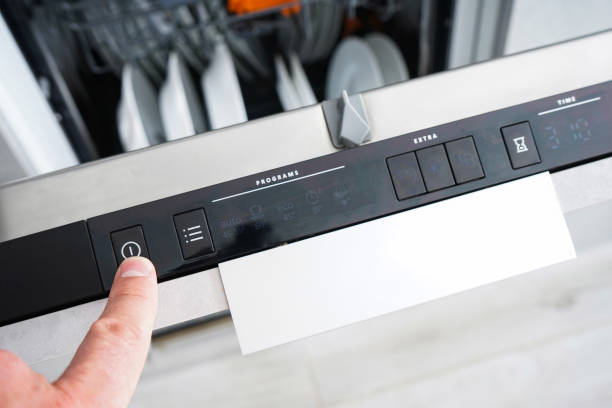When it comes to modern home appliances, Samsung is a trusted name known for its innovation and reliability. Samsung dishwashers, in particular, are designed to make our lives easier by efficiently cleaning our dishes and utensils. However, like any electronic device, they can sometimes encounter issues. One such problem is the “OC code” that may appear on your Samsung dishwasher’s display panel. In this article, we will explore what the Samsung dishwasher OC code signifies, its possible causes, and how to troubleshoot and resolve the issue.
Understanding the Samsung Dishwasher OC Code
The OC code on a Samsung dishwasher indicates an Overfill Control error. This means that the dishwasher has detected an excessive amount of water inside the unit, which can potentially lead to leaks and other malfunctions. The dishwasher’s built-in sensors constantly monitor the water level to prevent such occurrences and trigger the OC code as a precautionary measure.
Common Causes of the Samsung Dishwasher OC Code
Faulty Water Inlet Valve: The water inlet valve controls the flow of water into the dishwasher. If it fails to close properly, water may continuously fill the unit, triggering the OC code.
Blocked or Clogged Drain Hose: A clogged or obstructed drain hose can prevent proper water drainage from the dishwasher, causing an accumulation of water and triggering the OC code.
Faulty Water Level Sensor: The water level sensor monitors the amount of water inside the dishwasher. A malfunctioning sensor can lead to incorrect readings, causing the dishwasher to detect an overfill and display the OC code.
Troubleshooting and Resolving the Samsung Dishwasher OC Code
Check the Water Inlet Valve: Start by inspecting the water inlet valve for any signs of damage or debris. Ensure that the valve is closing properly after the dishwasher has filled. If you suspect a faulty valve, it may need to be replaced. Consult your dishwasher’s user manual or contact Samsung’s customer support for guidance.
Inspect the Drain Hose: Check the drain hose for any blockages or kinks that may hinder water drainage. Disconnect the hose and clean it thoroughly, removing any debris or obstructions. Reconnect the hose securely and make sure it is not bent or twisted.
Verify the Water Level Sensor: The water level sensor is typically located near the dishwasher’s sump or at the bottom of the unit. Inspect the sensor for any visible damage or loose connections. If necessary, replace the sensor following the manufacturer’s instructions.
Reset the Dishwasher: Sometimes, a simple reset can resolve minor glitches and clear error codes. Turn off the dishwasher and unplug it from the power source for a few minutes. Then, plug it back in and restart the dishwasher. Check if the OC code reappears.
Contact Professional Assistance: If the above steps do not resolve the issue, it is recommended to seek professional assistance from Samsung’s authorized service center or a qualified technician. They have the expertise and tools to diagnose and fix complex dishwasher problems effectively.
Frequently Asked Questions (FAQs)
Can the OC code be caused by a temporary water supply issue?
No, the OC code specifically relates to an overfill condition rather than a water supply issue. However, if the water inlet valve fails to close properly due to low water pressure, it can lead to continuous filling and trigger the OC code.
Why does the dishwasher detect an overfill even if there is no visible water leakage?
The dishwasher’s sensors are highly sensitive and can detect even small amounts of excess water. The overfill detection system is designed to prevent potential leaks and water damage, providing an added layer of protection.
Can I fix the OC code myself, or do I need professional help?
Some basic troubleshooting steps, such as checking the water inlet valve and drain hose, can be performed by homeowners. However, if the issue persists or requires component replacement, it is advisable to contact a professional technician to avoid causing further damage.
Conclusion
Encountering the OC code on your Samsung dishwasher can be a cause for concern, but it is often a manageable issue with the right troubleshooting steps. By understanding the common causes of the Samsung dishwasher OC code and following the suggested solutions outlined in this article, you can effectively resolve the overfill control error and get your dishwasher back to its optimal functioning. Remember to consult your dishwasher’s user manual or contact Samsung’s customer support for specific guidance and professional assistance when needed.

